The Government Museum in Chennai has an amazing collection of bronzes from around what is present day Tamil Nadu.
Here are some photos from my visit there last month. Click on any of them for a larger version on Flickr. Despite the sad condition of the displays – dust-covered and poorly lit – the wonder and detail of the craft and work is still easily visible.
This is a Nataraja from Vellore, circa 19th century:
The hair of other Natarajas I’ve seen until now have resembled the one above: a ring attached to the back of the head out of which locks of hair emerge. This next one, however (my favorite of the lot), has hair that is very much part of Siva’s head. It’s from Melaperamballam in Thanjavur, circa 10th Century AD.
Kaliya Krishna, Nilappadi, Nagappattinam, circa 16th Century AD:
Tirupurantaka, date and location unmarked:
Nataraja, Thiruvelangadu, Tiruvallur District, circa 11th Century:
There are a few more pictures here.

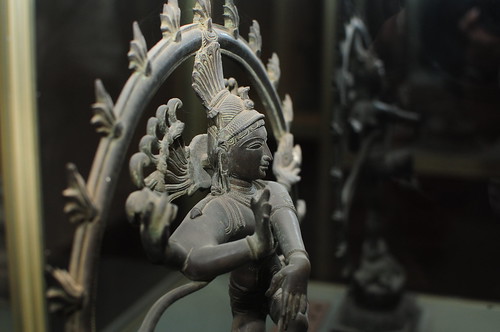
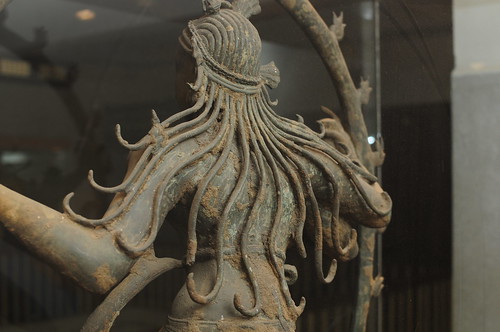
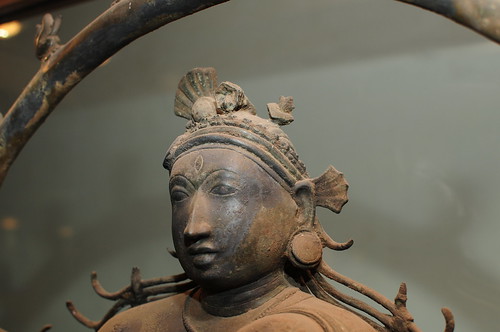
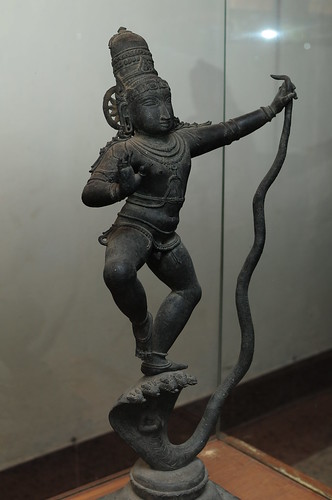
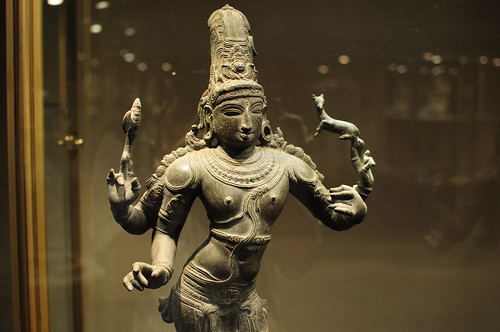
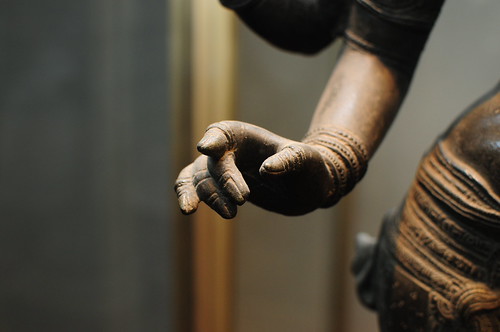

Michael Wood’s documentary on India has an episode on the great Tamil bronze-making tradition. I highly recommend the entire documentary. Fascinating watch.
http://www.pbs.org/thestoryofindia/about/episode_summaries/4/
Saw that….
Very cool how the bronze making artisans are a continuous line back into history
Wow, Vivek, gorgeous photographs! I was there a few years ago and it’s all a bit of a blur when I think back. Your shots do wonders to help the eye focus on the bronzes and not recall the dull surroundings…
It’s a pity too that there’s no eye-catching materials or guidebook that you can buy (other than some VERY dry, academic tomes) that would be a boon for the visitors who don’t know much about the bronzes and their history, context, etc.
Your pictures have given me the impetus to go back again this year. Thanks!
This made my day. Thanks!
Indeed! The information I’ve provided for each figure was all that was available: Where it came from, and when it was made. There was hardly any information given as to what period, whether it was Chola or Pallava, how and why it differs from those around it, etc. The lack of context was generally disappointing.
Amazing photos of beautiful statues.
Check out these brothers, who are making “lost wax” bronzes the old-fashioned way!
Their prices may seem high, but they are less than what you’d find in a US “antiques” shop.
Oops–here’s the link: http://www.bronzecreative.com/about_us.htm
http://www.bronzecreative.com/about_us.htm
fine work
However, I would rather go to the source and buy from the artist directly. The price would be considerably less and I would not have to pay middlemen.
Kidpoker–very interesting–any tips on that–can you do it from the US, or would you have to be in Tamil Nadu? I have started to look for a Nataraj in bronze, so any info. on a good deal most welcome!! My parents back in the desh aren’t very enterprising on this front! I want a nice piece for a good price (haha, unsurprisingly!).
the smithsonian(sackler gal) ran a show on the chola style that you have photographed above a loong time ago-wonder if its the same. btw, dunno why but ppl generally refrain from buying nataraja statues themselves
Sriram, Any further thoughts on that? I have developed the desire to buy one only since being in the US–seeing them in “antiques shops”–and thinking–hey! I could get a better deal back in India. But, yeah, it’s not as if my familial home has one or anything–that’s an interesting insight you have. . . .
seema – not sure but let me check in w/my folks back in madras and get back to you
“can you do it from the US, or would you have to be in Tamil Nadu?”
Tamil Nadu. You have to be on the ground. Its an expedition. I’ve travelled extensively through rural India, you find the most amazing artists. I like to get face to face with the people making art. The places where cottage industry shoppers are afraid to go.
Vivek, I don’t know what’s prompting these articles about Chennai, but I’m enjoying them very much!
The Government Museum is both a disappointment and a thrill at the same time. They have such incredible pieces, but the shabbiness of the place lets me down…
There’s something odd about the proportions of the 18th century Nataraja (first photo) — the torso a little too long, the legs too short and lacking in musculature. My basis for comparison is Chola dynasty prototypes.
I too love the Thanjavur Shiva’s long hair!
fourth photo of the Melaperumballam Nataraja is especially beautiful!